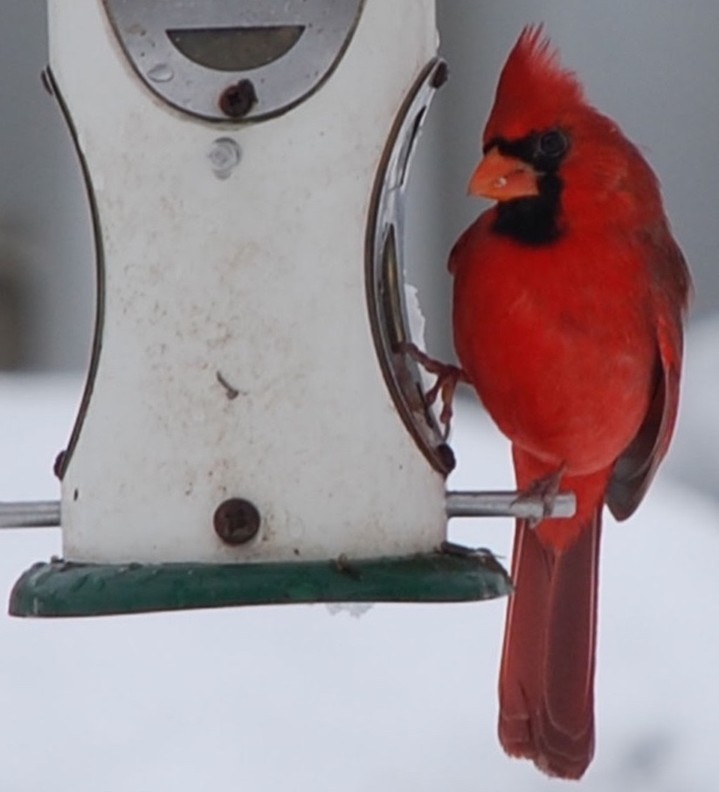– Discover how to enrich the lives of our feathered friends during the cold season with various bird foods.
– Learn about the nutritional benefits of different seeds, nuts, and fruits for birds in winter.
– Explore the impact of supplementary feeding on local bird populations and their well-being.
– Get tips on setting up a bird-friendly feeder that will turn your garden into a bird paradise.
– Uncover the joys and rewards of bird watching and supporting wildlife from your backyard.
As the winter chill settles in and the landscape becomes a monochrome tapestry of white and grey, it’s heartwarming to think of ways to help our vibrant, winged neighbors. The birds that enliven our gardens throughout the year sometimes struggle to find food in the colder months. But with a few careful steps, we can transform our backyards into bountiful sanctuaries for these charming creatures.
Bird feeding is a simple yet deeply rewarding practice, especially during winter. By offering various food options, we assist these resilient survivors of frost and invite the magic and melody of bird songs into our daily lives. So what’s on the menu for our feathered friends, and what makes each option a delectable choice for them?
**Black-oil sunflower seed**: This particular seed is a hit among various birds. The outer shell is not as tough as other sunflower seeds, making it easier to crack open, even for smaller birds. The kernels inside are packed with essential oils and calories, critical for maintaining energy levels.
**Peanuts**: Unsalted, shell-less peanuts are high in fat, a crucial energy source for birds in cold weather. These legumes are particularly popular with woodpeckers, titmice, nuthatches, and even larger birds like bluejays.
**Suet**: Suet is essentially a block of animal fat and is a highly concentrated form of energy and warmth for birds. It’s often mixed with seeds, nuts, and fruit bits to make it even more appealing. In the winter, suet is a lifeline, especially for insect-eating birds.
**Thistle seed**: Nyjer seed is a favorite among America’s beloved finches – from the charming goldfinch to the vibrant house finch. Thistle seeds are high in calories and oil, which can be a lifeline during the barren winter months.
**Safflower**: This is a hardy seed that not only serves as a nutritious option but is also less palatable to squirrels, which makes it ideal for a bird-dedicated feeder. While some birds might take time to warm to safflower seeds, they are ultimately a favored treat among certain species, such as cardinals and chickadees.
**Mealworms**: These aren’t everyone’s cup of tea, but dried mealworms are a winter feast for insectivorous birds. They provide a high-protein snack for birds like robins and bluebirds, who might struggle to find insects when the ground is frozen.
**Fruit**: Grapes, citrus slices, apple pieces, and banana slices can be like desserts for many birds. In particular, fruit-loving birds like orioles, tanagers, and robins will appreciate these juicy offerings.
Feeding birds in winter not only helps the local avian population but also gives us a chance to connect with nature and engage in citizen science by observing bird behaviors and which species we visit. It brings the natural world closer to us, offering a chance to pause, reflect, and appreciate life’s simple joys.
Moreover, setting up a bird-friendly feeder encourages environmental stewardship. Ensuring that the feeders are clean, well-stocked, and placed in safe spots away from predators requires a level of commitment and care that can forge a deeper understanding and respect for our natural surroundings.
However, feeding birds in winter comes with its own set of considerations. For instance, we must ensure that the food provided does not inadvertently harm the birds or disturb the ecological balance. Always source high-quality bird food that is free from mold and toxins. In addition, keep feeders clean to prevent the spread of diseases, and avoid using nets or mesh bags that birds can get entangled in.
Birdwatching, which often accompanies the hobby of bird feeding, can open up a new world of discovery. It’s an activity that requires patience, quiet, and a keen eye, but the rewards are immense. Observing the kaleidoscope of species and behaviors right outside our windows, we can learn about migration patterns and social interactions among birds and even identify trends and changes in local bird populations.
The charm of a garden teeming with birds is unmatched. Their industrious fluttering, the heartwarming pecks at the feeders, and musical calls and songs can transform a silent winter landscape into a symphony of life. Doing something nice for the birds this winter also means doing something moving and vitalizing for ourselves. It’s an act of giving that comes back multifold, filled with moments of wonder, beauty, and connection.
So, I invite you to join the ranks of those who help feather the nests of winter’s wings. Whether you hang a simple feeder or create an elaborate bird-friendly habitat, you contribute to the well-being of our environment and its inhabitants. In our fast-paced digital world, nurturing these small oases of natural tranquility can become sanctuaries for birds and humans alike.
In conclusion, supplying winter bird foods like black-oil sunflower seed, peanuts, suet, thistle seed, safflower, mealworms, and fruits will benefit the birds and enhance your outdoor experience. With thoughtful care, you can create a harmonious space that supports local wildlife and adds a layer of beauty to the serene winter months. Embrace the rhythm of the seasons and the joy that comes with caring for our feathered companions.
*****
Source Description
Want to do something nice for the birds this winter?
Add some of these yummy bird foods to your winter bird feeders: Black-oil sunflower seed, peanuts, suet, thistle seed, safflower, mealworms, and fruit like grapes or sliced citrus, apple and banana.
Follow the link in our profile to find ways to help birds this winter: https://bit.ly/3uXLrVH.


